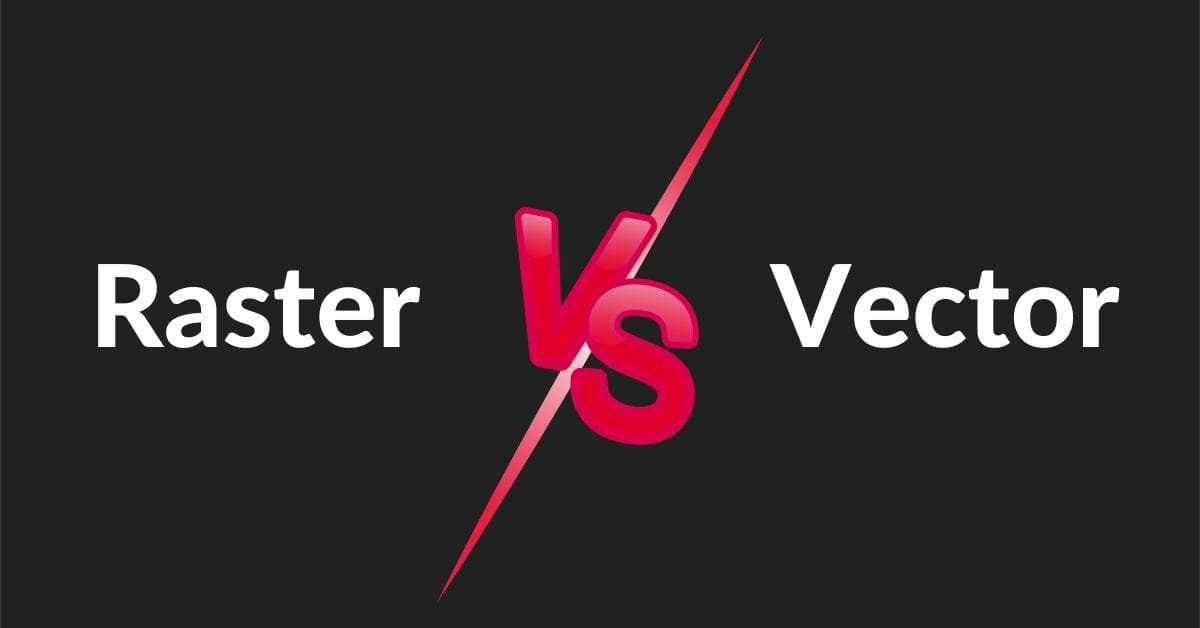In the world of digital design and graphics, the terms “raster” and “vector” are often used to describe different types of images, but what exactly do they mean, and how do they differ? In this article, we’ll explore the key distinctions between raster and vector conversion, shedding light on their unique characteristics and applications.
Raster vs. Vector Conversion
When it comes to digital images, the choice between raster and vector conversion can significantly impact the quality and versatility of your visuals. Understanding the fundamental differences between these two image types is key to making informed design decisions.
Raster Conversion
Raster images, also known as bitmap images, are composed of a grid of individual pixels. Each pixel carries specific color and location information. Common examples of raster file formats include JPEG, PNG, and GIF. Raster images are widely used for photographs and complex images because they can capture intricate details and a wide range of colors.
Key characteristics of raster conversion:
- Resolution-dependent: Raster images are resolution-dependent, which means they have a fixed number of pixels. If you try to enlarge a raster image, it can lead to pixelation and loss of quality.
- Photorealistic: Raster images are excellent for capturing the nuances of real-world images, making them ideal for photographs and highly detailed illustrations.
- File size: Raster images tend to have larger file sizes compared to their vector counterparts, as they store information about each individual pixel.
- Editing limitations: Raster images are less flexible when it comes to editing and scaling, as changes can degrade image quality.
Vector Conversion
Vector images, on the other hand, are created using mathematical equations to define shapes, lines, and colors. Common vector file formats include SVG, AI, and EPS. Vector images are versatile and highly adaptable, making them suitable for a wide range of design applications.
Key characteristics of vector conversion:
- Resolution-independent: Vector images are resolution-independent, allowing you to scale them without any loss of quality. This makes them perfect for logos and graphics that need to be resized for various purposes.
- Editable and flexible: Vector images are easily editable, as you can modify individual elements without affecting the overall quality. This flexibility makes them ideal for design work.
- Smaller file size: Vector images typically have smaller file sizes because they store mathematical instructions rather than pixel data.
- Not suitable for photorealism: While vector images excel at representing shapes and graphics, they are not well-suited for capturing the intricate details found in photographs.
Applications of Raster and Vector Conversion
The choice between raster and vector conversion depends on the specific application:
Raster Conversion Applications:
- Photography: Raster images are perfect for photographs, as they can reproduce detailed scenes with precision.
- Web Design: Raster images are commonly used for web graphics, such as banners and buttons.
- Digital Painting: Artists often use raster images for creating digital paintings and illustrations.
Vector Conversion Applications:
- Logo Design: Vector images are ideal for creating logos and branding materials because they can be resized without loss of quality.
- Typography: Vector fonts are used for crisp and scalable text in various design projects.
- Illustrations: Vector images are great for creating simple and complex illustrations, infographics, and diagrams.
FAQs
1. Can I convert a raster image to a vector image?
Yes, it is possible to convert a raster image to a vector image through a process known as raster-to-vector conversion. This process involves tracing the shapes in the raster image and converting them into vector paths. Keep in mind that the result may vary in quality based on the complexity of the original image.
2. Which format is better for printing, raster, or vector?
Vector images are generally better for printing because they are resolution-independent. Raster images, when printed at a larger size than their original resolution, may lose quality and appear pixelated.
3. Are there any free tools for converting images from raster to vector?
Yes, there are free and paid tools available for raster-to-vector conversion. Some popular options include Inkscape (free), Adobe Illustrator (paid), and online services like Vector Magic.
4. Can I use vector images on my website?
Yes, you can use vector images on your website, but they are typically used for logos, icons, and simple graphics. For complex photographic images, raster images are more suitable.
5. What is the best choice for a detailed map, raster or vector?
For a detailed map, especially one that requires zooming in and out without losing quality, vector images are the better choice. They allow for scalability and maintain clarity regardless of zoom level.
Conclusion
Understanding the difference between raster and vector conversion is crucial for selecting the right image format for your specific design and photo editing needs. Raster images excel at capturing the photorealism of photographs, while vector images provide the flexibility and scalability required for logos and crisp graphics. By making informed choices, you can ensure that your visual content looks its best in various applications.
This page was last edited on 22 February 2024, at 1:00 pm
